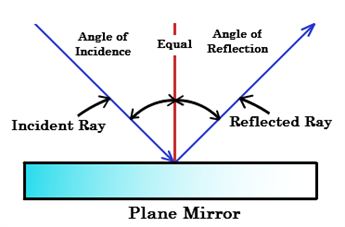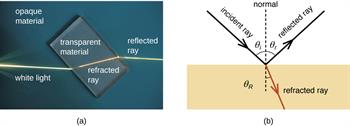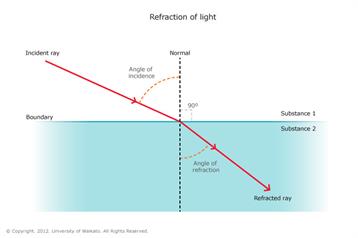
PUMPA - SMART LEARNING
எங்கள் ஆசிரியர்களுடன் 1-ஆன்-1 ஆலோசனை நேரத்தைப் பெறுங்கள். டாப்பர் ஆவதற்கு நாங்கள் பயிற்சி அளிப்போம்
Book Free DemoIn the previous sessions, we have studied that when a light ray strikes a polished surface place in the air, it is reflected into the air itself.

However, when the light ray strikes the transparent material, it is not fully reflected, but a portion of it is reflected, a portion of it is absorbed, and most of the light passes through it.

This is because, through the air, the light rays travel at a speed of . Still, it can not travel with the same speed in water, glass or any other material because optically denser medium such as water and glass offer some resistance to the light rays.
So, light rays travelling from a unique medium like air into a denser mediums like glass or water have deviated from their straight-line path.

This bending of light about the normal, at the point of incidence, as it travels from one transparent medium to another medium, is called refraction of light.
When a light ray travels from the rarer medium into the denser medium, it bends towards the normal. Conversely, it bends away from the normal when it travels from the denser medium into the rarer medium.
Reference:
Image credit:
- https://upload.wikimedia.org/wikipedia/commons/c/c3/Plane-mirror.png
- https://upload.wikimedia.org/wikipedia/commons/5/57/OSC_Microbio_02_01_Refraction.jpg
- https://www.sciencelearn.org.nz/images/49-refraction-of-light-in-water